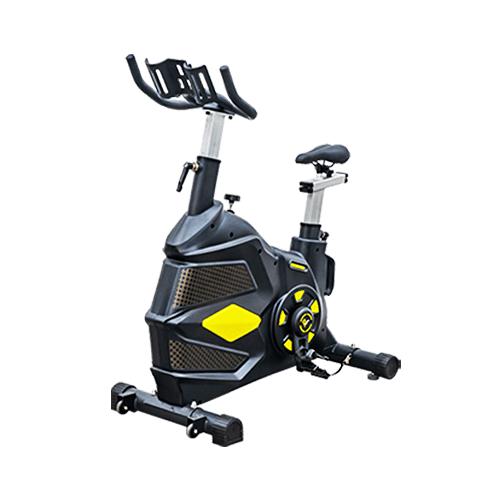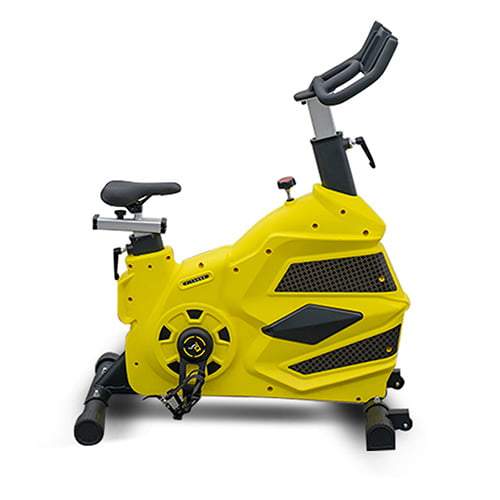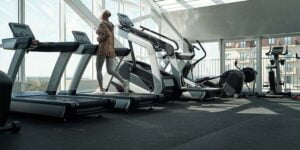Introduction

Living in an apartment often comes with the challenge of balancing personal fitness goals with consideration for neighbors. A quiet exercise bike emerges as an ideal solution, offering the convenience of indoor cycling without the noise associated with traditional exercise equipment. This blog explores in-depth the benefits of incorporating a quiet exercise bike into your apartment lifestyle, highlighting its noise reduction capabilities, space efficiency, health benefits, and overall convenience.
Benefits of Using a Quiet Exercise Bike
Noise Reduction Technology
Quiet exercise bikes are equipped with advanced noise reduction technology, making them significantly quieter than their conventional counterparts. This technology typically includes silent magnetic resistance systems and belt-driven mechanisms that operate smoothly and quietly. Unlike traditional stationary bikes that can produce loud, clunky noises, quiet exercise bikes allow you to enjoy your workout without disturbing others in adjacent apartments.
Advanced Mechanics
The mechanics of quiet exercise bikes are engineered to minimize friction and vibration, resulting in a whisper-quiet operation. This is achieved through precision engineering of components such as magnetic resistance systems and belt drives, which reduce noise levels to as low as 35-40 decibels (dB) during use.
Smooth Operation
Smooth operation not only enhances the user experience by providing a fluid cycling motion but also ensures minimal noise emission. This makes exercise bikes suitable for early morning or late-night workouts when noise sensitivity is heightened.
Apartment-Friendly Design
Quiet exercise bikes are designed with the spatial constraints of apartments in mind, featuring compact dimensions and lightweight construction. These attributes make them easy to set up and move around, optimizing the use of limited living space.
Compact Size
The compact size of exercise bikes allows them to fit seamlessly into apartments without occupying excessive floor space. Models are available in various dimensions, typically ranging from 40 to 50 inches in length and 20 to 22 inches in width, ensuring compatibility with different apartment layouts.
Lightweight Construction
Most quiet exercise bikes weigh between 80 to 100 pounds, making them lightweight compared to traditional gym equipment. This facilitates ease of transportation within the apartment and enables users to store the bike in a convenient location when not in use.
Versatile Workout Options
Quiet exercise bikes offer a wide range of workout programs and intensity levels to accommodate diverse fitness goals. Many models are equipped with customizable settings for resistance levels, allowing users to tailor their workouts to specific cardiovascular and strength training objectives.
Health Benefits
Regular use of a exercise bike contributes to improved cardiovascular health, enhanced stamina, and effective calorie burning. Cycling engages major muscle groups such as the legs, buttocks, and core, providing a full-body workout that promotes overall fitness and well-being.
Convenience and Accessibility
24/7 Access
Having a exercise bike at home provides 24/7 access to fitness opportunities, eliminating the need to commute to a gym or outdoor cycling route. This accessibility allows users to integrate exercise seamlessly into their daily routines, regardless of time constraints or weather conditions.
Weather Independence
Unlike outdoor cycling, which is subject to weather fluctuations, quiet exercise bikes enable consistent workouts indoors. This weather independence ensures continuity in your fitness regimen, preventing disruptions caused by rain, snow, or extreme temperatures.
User-Friendly Features
Adjustable Settings
Quiet exercise bikes are equipped with adjustable features such as seat height, handlebar position, and resistance levels. These settings accommodate users of varying heights and fitness levels, ensuring comfort and efficiency during workouts.
Built-in Technology
Modern exercise bikes are integrated with advanced technology, including LCD displays, heart rate monitors, and connectivity options. These features provide real-time feedback on workout metrics such as distance, speed, calories burned, and heart rate, enhancing motivation and tracking progress over time.
Exercise Recommendations Table
| Fitness Goal | Type of Exercise | Frequency | Duration per Session | Intensity Level | Notes |
|---|---|---|---|---|---|
| Cardiovascular Health | Cycling, Jogging, Swimming | 3-5 times per week | 30-60 minutes | Moderate to Vigorous | Include warm-up and cool-down |
| Strength Training | Weightlifting, Bodyweight Exercises | 2-3 times per week | 45-60 minutes | Moderate to High | Rotate muscle groups |
| Flexibility | Yoga, Stretching | Daily or 3-4 times per week | 15-30 minutes | Gentle to Moderate | Focus on breathing and relaxation |
| Weight Loss | Interval Training, Aerobic Exercises | 4-6 times per week | 20-45 minutes | High Intensity | Monitor calorie intake |
| Overall Fitness | Circuit Training, CrossFit | 3-4 times per week | 30-60 minutes | Varied Intensity | Incorporate rest days |
| Stress Relief | Tai Chi, Pilates | 2-3 times per week | 30-45 minutes | Gentle to Moderate | Mind-body connection |
Environmental Impact

Quiet exercise bikes contribute to environmental sustainability by consuming minimal electricity and producing low noise emissions compared to larger gym equipment. This eco-friendly feature aligns with modern trends towards energy-efficient fitness solutions.
Conclusion
In conclusion, integrating a quiet exercise bike into your apartment lifestyle offers a multitude of benefits, ranging from noise reduction and space efficiency to improved health and accessibility. Whether you prioritize fitness convenience, neighbor consideration, or overall well-being, exercise bikes provide a practical and effective solution for indoor cycling enthusiasts.
FAQ
Q: Are quiet exercise bikes suitable for small apartments?
A: Yes, quiet exercise bikes are specifically designed to be compact and space-efficient, making them ideal for small apartments where maximizing space is essential.
Q: How noisy are quiet exercise bikes compared to traditional ones?
A: Quiet exercise bikes operate at significantly lower noise levels, typically between 35 to 40 decibels (dB), compared to traditional exercise bikes, which can emit louder mechanical noises.



